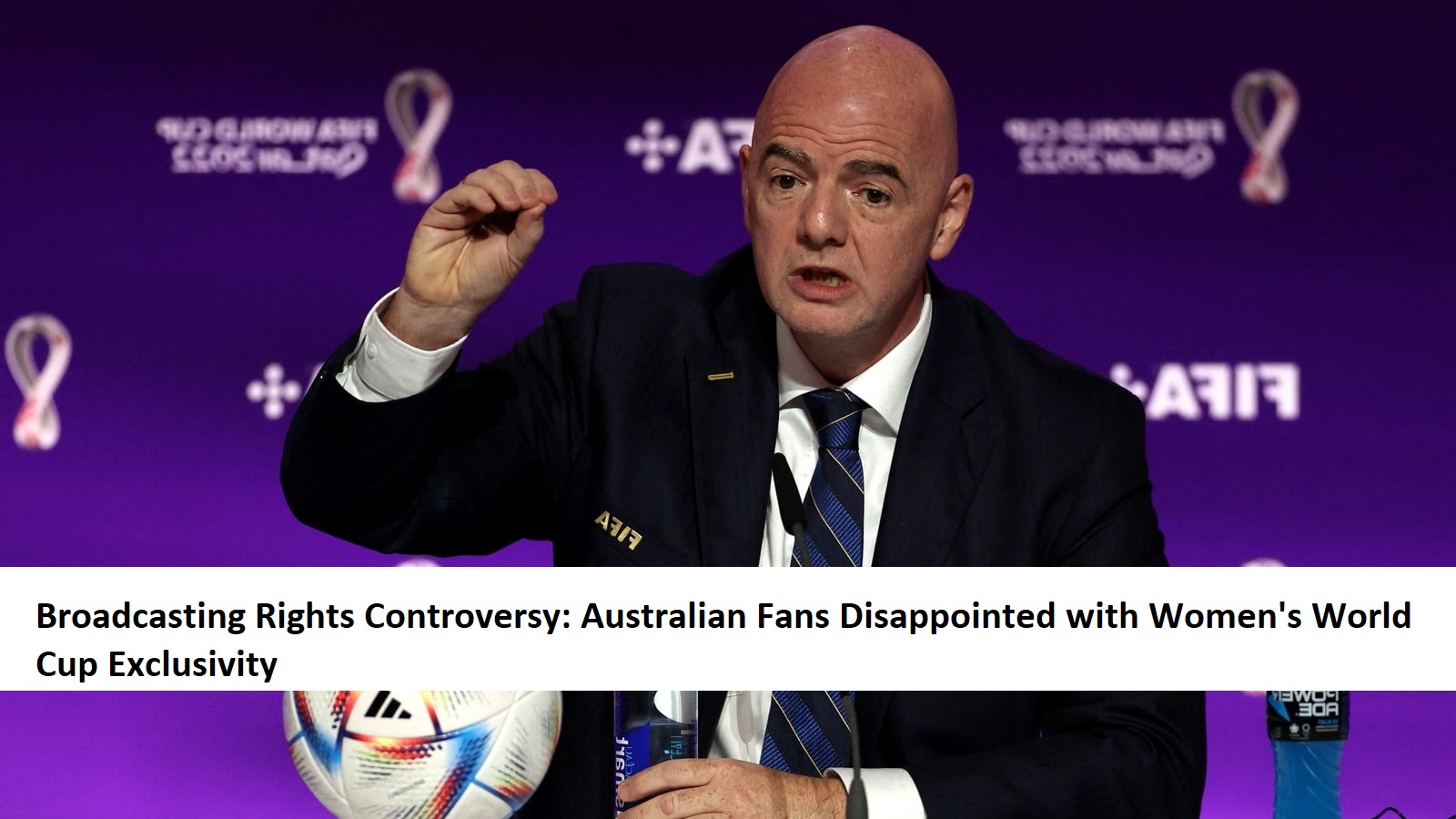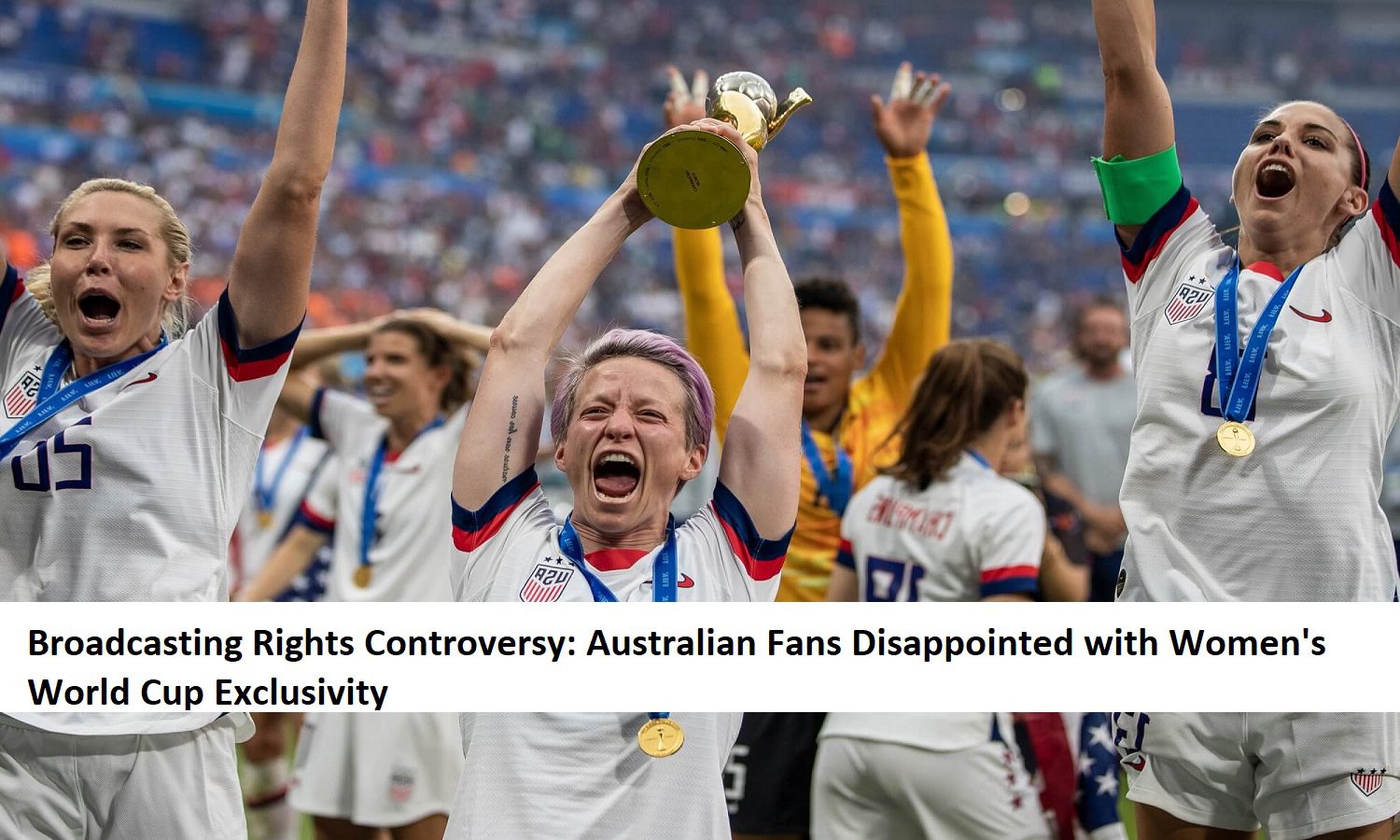Broadcasting Rights Controversy : World Cup enthusiasts across the globe eagerly await the announcement of the venue. However, Australian fans faced disappointment when FIFA decided to sell the FIFA broadcasting rights for the Women’s World Cup to a streaming provider, making it challenging for casual viewers to catch their favorite team’s matches. Despite the tournament being considered one of Australia’s most significant sporting events since the Sydney Olympics, the decision to license the games to Optus, a cellular business, led to frustrations among soccer supporters.
While Australia’s free TV network broadcasted all 64 men’s World Cup matches from Qatar, the Women’s World Cup games became exclusive to Optus, with only a selection of Australian matches available for free. This disparity in accessibility made it harder for local fans to follow the tournament compared to viewers in Europe and the US. The lack of widespread coverage left passionate supporters like Beth Monkley feeling let down, as she saw the women’s soccer team not receiving the attention it deserved.
The issue of unequal broadcasting rights extends beyond just this event, as Australia’s national soccer games, both men’s and women’s, are expected to be aired statewide for free. This expectation contrasts with FIFA’s decision to grant Optus the broadcasting rights, creating a barrier between many fans and the complete viewing experience. As a result, soccer enthusiasts and casual viewers in sports-obsessed Australia expressed their dissatisfaction, especially when compared to the popularity of rugby, cricket, and Australian rules football in the country.
Andrew Moore, who witnessed a thrilling group stage match with his wife, expected renowned Australian sports station Channel Seven to broadcast all the games. However, the lack of coverage left him puzzled, trying to find alternative channels to no avail. With the tournament generating record audiences in the region, experts like David Rowe from Western Sydney University believe that the limited coverage was a missed opportunity for FIFA to promote and monetize women’s soccer further.


Shohei Ohtani: Dominating On and Off the Field as Angels Chase Playoff Dreams
Optus, however, defended their rights payments, arguing that they contribute to the growth and equity of women’s sports and support national team players. But Rowe, an expert in Australian sports and media, pointed out the historical distrust toward soccer in the country, making the sport face challenges in gaining equal coverage compared to other sports.
While FIFA earns significantly more from the men’s World Cup, there are hopes that women’s soccer will continue to grow in popularity and garner greater TV rights payments in the future. FIFA President Gianni Infantino voiced concerns that European TV broadcasters are undervaluing the event, which might impact the airing of key events if they don’t pay more.
Despite the challenges faced in broadcasting, Australian fans, like those cheering for the national women’s team, the Matildas, remain fervent in their support. The euphoria surrounding the team’s games demonstrates the immense enthusiasm among supporters. However, the lack of widespread coverage and exclusive rights deal with Optus has left many feeling that the opportunity to boost women’s soccer in the country was not fully utilized.
Also Read: Bismarck Tornado Preparedness: Strengthening the Warning System with New Sirens for a Growing City
Our Reader’s Queries
What was the FCC regulation that broadcasters must cover both sides of controversial topics called?
In June 1987, Congress tried to beat the FCC decision and make the Fairness Doctrine into law with the Fairness in Broadcasting Act of 1987 S. 742.
What was the Fairness Doctrine messages on broadcast media?
Broadcasters were mandated by the fairness doctrine to dedicate airtime to discussing public interest issues and presenting opposing viewpoints. This meant that they had to cover controversial topics and make sure multiple sides were represented.
What else did the fairness doctrine require that broadcasters address public issues of concern to the community?
The fairness doctrine was a U.S. communications policy from 1949 to 1987 created by the Federal Communications Commission (FCC). It mandated that licensed radio and TV broadcasters offer impartial and equitable coverage of contentious local topics, such as by providing equivalent airtime to conflicting viewpoints.
What is the fundamental fairness doctrine?
The Fundamental Fairness Doctrine, also known as due process, ensures that legal issues are resolved in accordance with the law and that everyone is treated fairly. It’s basically a fancy way of saying that courts have to follow the rules to make sure things are fair for everyone involved.

